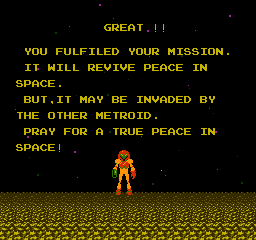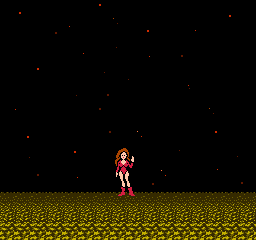Metroid
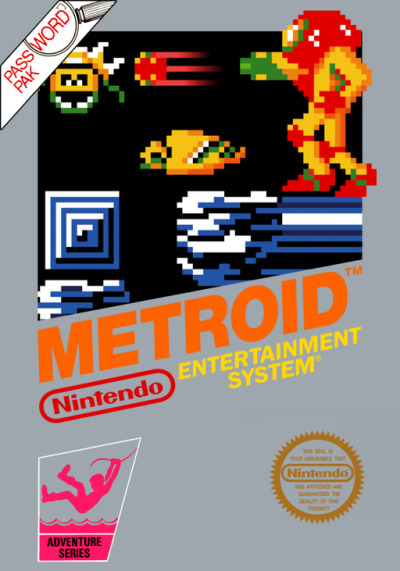
- Year: 1986
- Developer: Nintendo R&D1
- Publisher: Nintendo
- Genre: Metroidvania
- Players: 1
- Mapper: MMC1
- Size: 128KB
Metroid is an interesting game. On the one hand, it had a lot of new ideas, featuring non-linear sidescrolling action, largely self-directed exploration, and a variety of items that would unlock further map exploration. On the other hand, the execution is quite rough at times. The game takes place on the planet Zebes (or Zebeth if you read the in-game intro), where bounty hunter Samus Aran has been contracted to land, investigate space pirate operations, and find and exterminate new lifeforms called Metroids, as well as a biomechanical supercomputer called Mother Brain. To do this you must explore the four regions of Zebes (Brinstar, Norfair, Kraid's Lair, and Ridley's Lair) and defeat the two bosses (Kraid and Ridley) to unlock the final area, Tourian, which is where the Metroids and Mother Brain reside. You also have to find a variety of upgrades, everything from a beam that lets you shoot across the whole screen to an upgrade that projects an electric field around you whenever you jump.
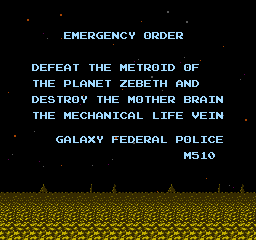

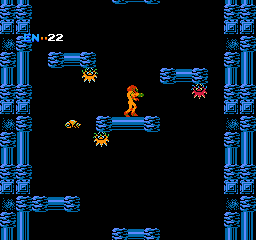
Once you've completed all that, you can enter Tourian, where you must destroy a dozen or so Metroids, which are jellyfish-like creatures that latch onto you and drain your health rapidly. The only way to defeat them is by freezing them with your ice beam and then pumping them full of missiles. Once you've completed that, you enter Mother Brain's chambers. You shoot your way through the living barriers to get to Mother Brain, then bust open the glass tank she's in and hit her with a few dozen missiles. After that, the games says you've set a time bomb (somehow) and you must get out fast. One quick trip up a vertical shaft later and you've completed the game, been informed that Samus is in fact a woman (shocker), and been told to be on the look out for the other Metroid (I truly love 1980s game translations).
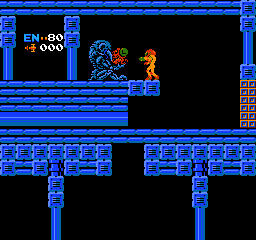
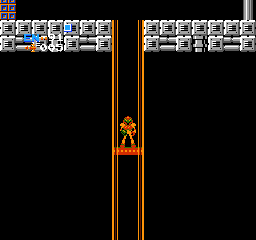

The games premise is pretty standard for the day, and even today, but the path to get there was pretty new for the time. The entire world is opened up to you almost from the start, 6 different paths open to you once you unlock the first two abilites. You won't be able to find every item in these paths until later in the game, but you're able to explore each of them in whatever order you want. There are plenty of upgrades, but almost all of them are optional to actually finishing the game. Unlike later games, this one doesn't even track how many items you collect, so there's no reward or anything for finding every item.
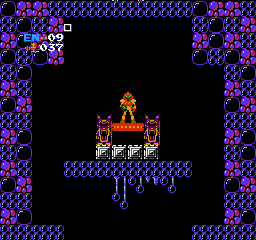
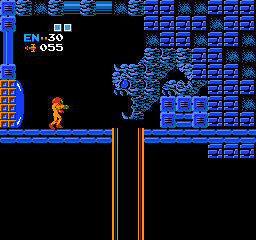
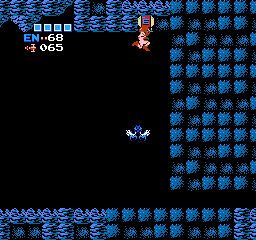
This is unfortunate, as between the copy-pasted room designs and the complete lack of a map, finding your way around the game is pretty challenging, especially in the larger areas. The game uses a plain black background everywhere, and rooms tend to use very similar designs, leading rooms to bleed together. Vertical shafts are pretty common as well, and use a repeating pattern of platforms that makes them feel like they're stretching on forever, and makes it hard to figure out which door you're trying to find. The enemy designs are pretty varied, but they're all quite spongey, and respawn once you've scrolled their spawn point off the screen, as is somewhat typical for NES games. Enemies also don't seem to drop pickups as often as in later games, so fighting ends up being a losing proposition, and yet enemies are dense enough that you can't easily avoid them. There's also an abundance of enemies that sit below your shooting height, but there is no way to crouch so you can shoot them. Thus combat ends up being a very frustrating affair. This is somewhat solved by acquiring the wave beam, whose shots travel in a sine wave pattern and pass through walls, but this comes with other downsides, like can't hit things straight ahead sometimes and heavy lag at others. On top of all that, if you do end up dying, or just continuing an earlier game, you spawn with 30 health, no matter how much you can hold in total, necessitating a lot of grinding to get your health back up to something reasonable.
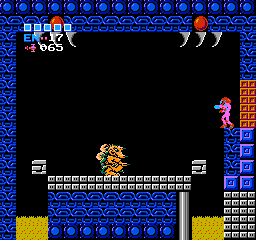
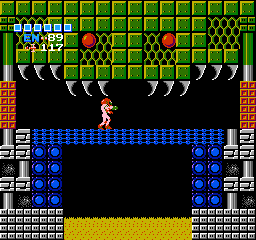
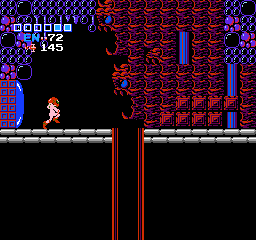
My other large issue with the game is how frequently finding progression involves bombing every floor and jumping against every wall until you find something, as unmarked bombable blocks and secret tunnels are the order of the day here. Between this and the aforementioned missing map, finding your way around can be genuinely frustrating at times, especially as there are some sets of rooms that lead in a large loop and contain nothing of value, something that would be quite rare in future games in the series.
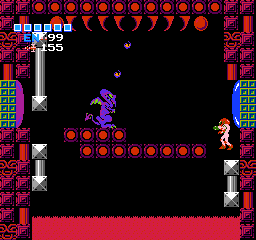
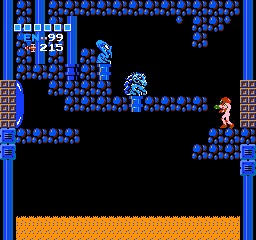

One interesting thing I noticed was that, in order to get around palette limitations of the NES, pickups, upgrades, and even some enemies will rapidly flash between two totally different colors in order to approximate a third color, or to create pseudo-transparency. It's an effect I haven't seen a lot in my admittedly limited NES experience, and allows for extra colors which is nice, but I can also see how it might bother people who are sensitive to flashing effects.


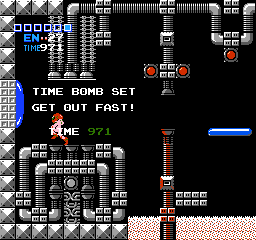
I've heard many times over the years that development on this game was rushed, and that most of it came together in the final six months before launch, which tracks with how unpolished a lot of the game feels. In the end it has a lot of good ideas that would be polished and refined over the next few games, but in this game, they are decidedly underbaked. All in all, it's not a bad game, just one that tries your patience at times. I had one instance where I had to kill myself to get out of an area, because an enemy I was supposed to use as a platform wouldn't spawn for whatever reason, and the knockback feels poorly calibrated for the enemy placement. Definitely could have used a few more months in development, though it was clearly good enough to get us sequels to improve on everything. Not a game I'd recommend unless you're interested in experiencing the origins of Metroid or metroidvanias, but I don't regret playing it myself either. Sometime I might try out the mapping patch, and I'll edit this if I do to talk about it.
